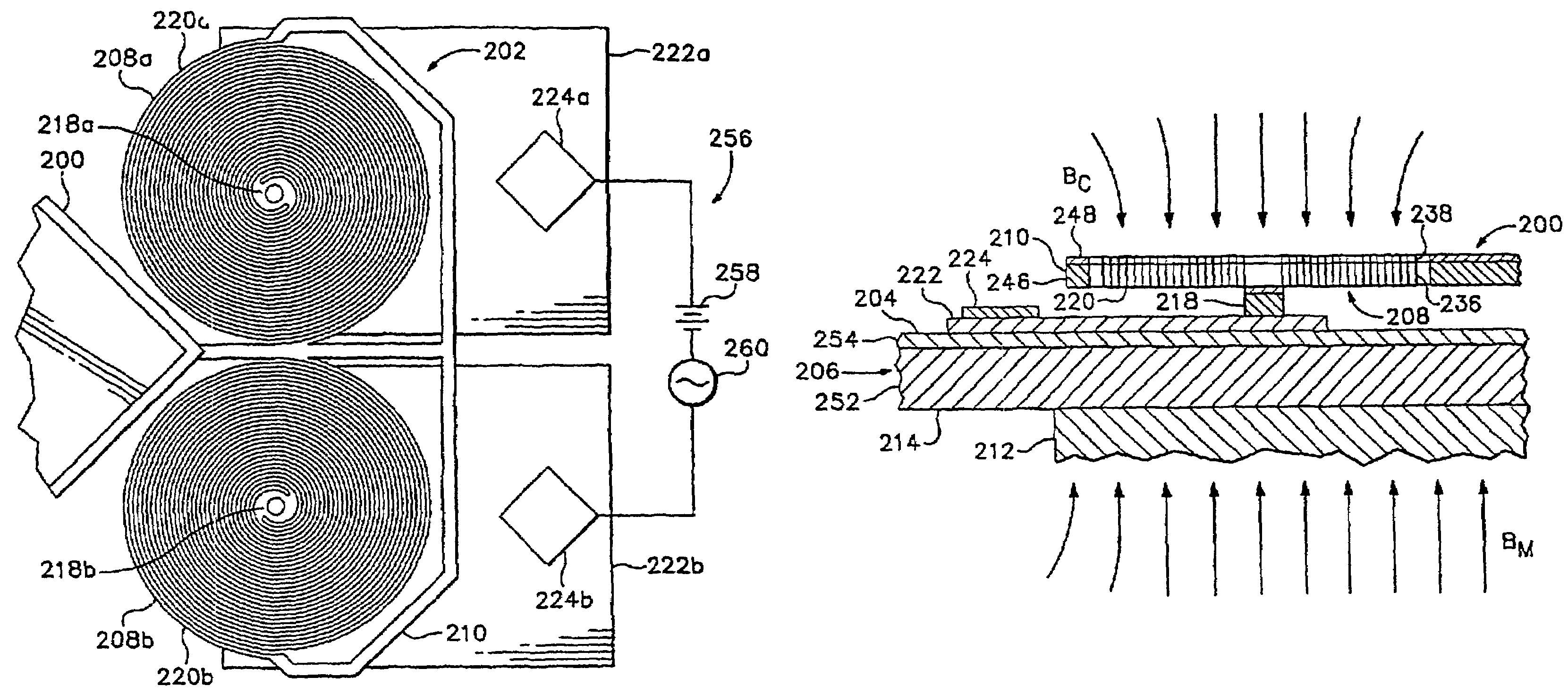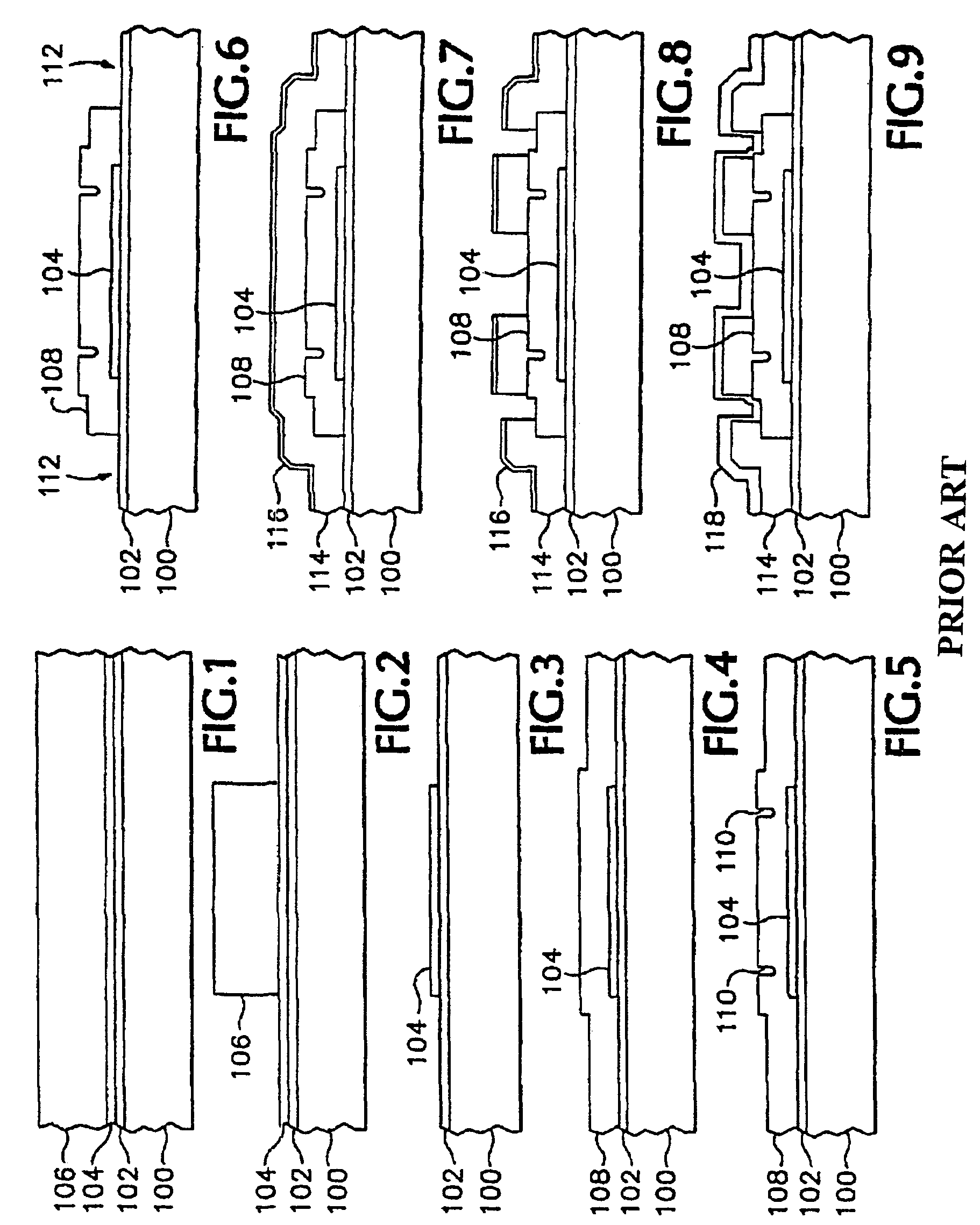Magnetically actuated microelectromechanical systems actuator
a microelectromechanical and actuator technology, applied in the direction of snap-action arrangement, magnets, instruments, etc., can solve the problems of electrically conductive layers, excessive and possibly damaging current, cross-talk, etc., to improve or decrease the strength of magnetic fields, simplify the arrangement of coils, and prevent cross-talk and excessive current.
- Summary
- Abstract
- Description
- Claims
- Application Information
AI Technical Summary
Benefits of technology
Problems solved by technology
Method used
Image
Examples
Embodiment Construction
[0039]A preferred embodiment of the present invention is described below with reference to the accompanying FIGS. 16-20. The present invention provides an electrically controlled actuator. While the present actuator is shown controlling a mirror surface-a common application of microelectrical mechanical actuators-the actuator may be used to control other physical structures, such as lenses, valves, and switches.
[0040]In the present invention, a repulsive magnetic force is used to elevate and control an orientation of the mirror, or other object. In a first preferred embodiment, electrical input is provided to expandable, semiconductor coils to create a variable magnetic field. A permanent magnet located near the semiconductor coils provides an opposing fixed magnetic force that causes the semiconductor coils to expand in a predictable and controllable manner. This coil expansion provides mechanical motion that can move an object such as the exemplary mirror. The electrical input may...
PUM
| Property | Measurement | Unit |
|---|---|---|
| rotation | aaaaa | aaaaa |
| rotation | aaaaa | aaaaa |
| rotation | aaaaa | aaaaa |
Abstract
Description
Claims
Application Information
 Login to View More
Login to View More - R&D
- Intellectual Property
- Life Sciences
- Materials
- Tech Scout
- Unparalleled Data Quality
- Higher Quality Content
- 60% Fewer Hallucinations
Browse by: Latest US Patents, China's latest patents, Technical Efficacy Thesaurus, Application Domain, Technology Topic, Popular Technical Reports.
© 2025 PatSnap. All rights reserved.Legal|Privacy policy|Modern Slavery Act Transparency Statement|Sitemap|About US| Contact US: help@patsnap.com



